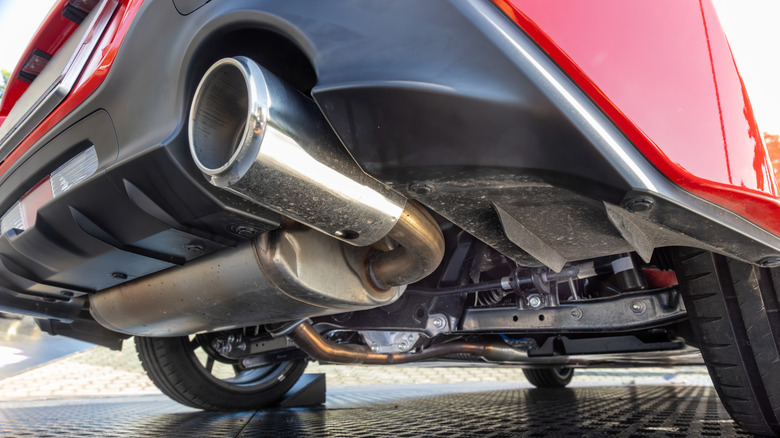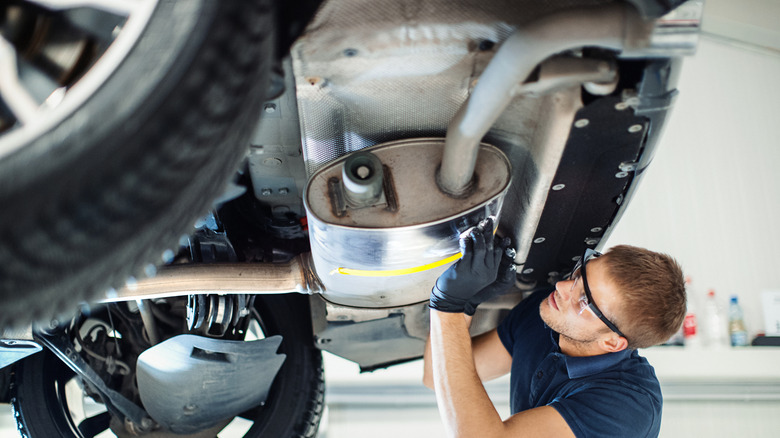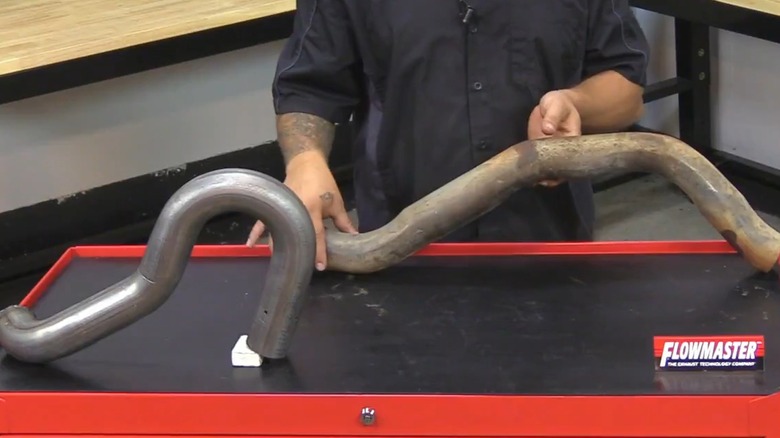How To Choose The Right Size Exhaust For Your Vehicle (And What Happens If It's Too Big Or Small)
For all intents and purposes, an automobile engine is basically a large mechanism that moves air. The engine needs to be able to breathe in order to provide optimal performance. This is why, when swapping to a larger engine or simply upgrading your exhaust system, it's crucial to select the appropriate size pipes for the best results. And, if your running vehicle smells odd or has suddenly become louder, you should check your vehicle for exhaust leaks.
One of the pitfalls many can fall into during a car build is the "more is better" philosophy, which can cause trouble in terms of exhaust diameter. In order to match up the correct exhaust size with your vehicle's engine, you'll need to factor in displacement and output.
So, for instance, a 200 cubic-inch (3.2-liter) engine with 250 horsepower would require a 2.5-inch diameter exhaust pipe. Or a 250 cubic-inch (4-liter) engine with 300 horsepower would best match with a 3-inch exhaust pipe. As the size of the engine and horsepower increase, equating an inch in diameter for every 100 horsepower will typically get you close, with a few exceptions. Other examples include a 350 cubic-inch (5.7-liter) engine with 400 horsepower, which would require a single pipe 4 inches in diameter, or with 350 horsepower, you would need a 3.5-inch pipe.
Why it's bad when an exhaust pipe isn't of the proper size
What if you decide against the above advice, and install some massive pipes (which probably look impressive), on a smaller engine with lower output? After all, the more air goes through the engine, the better the performance, right? Well, that's true only to a point, as an exhaust system that's far too large for an engine creates problems. A mismatched exhaust larger than what's needed causes something called over-scavenging.
Exhaust scavenging is essentially a state in which the exhaust gases are used to enhance other engine processes. Namely, it creates a vacuum that increases the amount of exhaust pulled from each cylinder in the engine, while also grabbing more oxygen and fuel in the process. When the exhaust system is too big, this process occurs much less quickly, reducing the scavenging benefits and hurting performance.
Conversely, you can also go too small with your exhaust and experience back pressure, which is essentially a force pushing counter to the normal airflow of the engine. An inadequately sized exhaust creates additional restrictions, impeding a system that requires moving air through the engine efficiently. As you might expect, exhaust back pressure results in noticeable performance loss. Did you know you can measure exhaust back pressure in your vehicle?
Beyond size, what else should you consider when replacing your exhaust?
Aside from selecting the appropriate size pipes, you'll want to avoid creating any airflow restrictions throughout the system. For example, components of the exhaust system, such as the catalytic converter and muffler, will need to be connected with the same size pipes to avoid a pinch point. Remember, any restrictions (such as a change in diameter) can create exhaust back pressure, which negatively impacts engine capability.
You'll also want to minimize the number of twists and turns in the piping as much as possible. Even the method in which the pipes are bent is important for airflow. One of the reasons enthusiasts opt for aftermarket exhaust systems is that many of them employ a mandrel bend rather than a compression bend. Unfortunately, while a compression bend method does curve the pipe, it also creates different diameters as a result of being pressed. This means that some areas are smaller in size, thus restricting the flow of exhaust gases. Mandrel bends are considered superior because, during the shaping process, a steel ball is inserted into the pipe, which helps keep the sizing consistent throughout.
Speaking of exhaust systems, few designs are as eye-catching as those with side pipes. We rounded up some of the coolest classic cars with side pipes and explained why they're used beyond looks.


